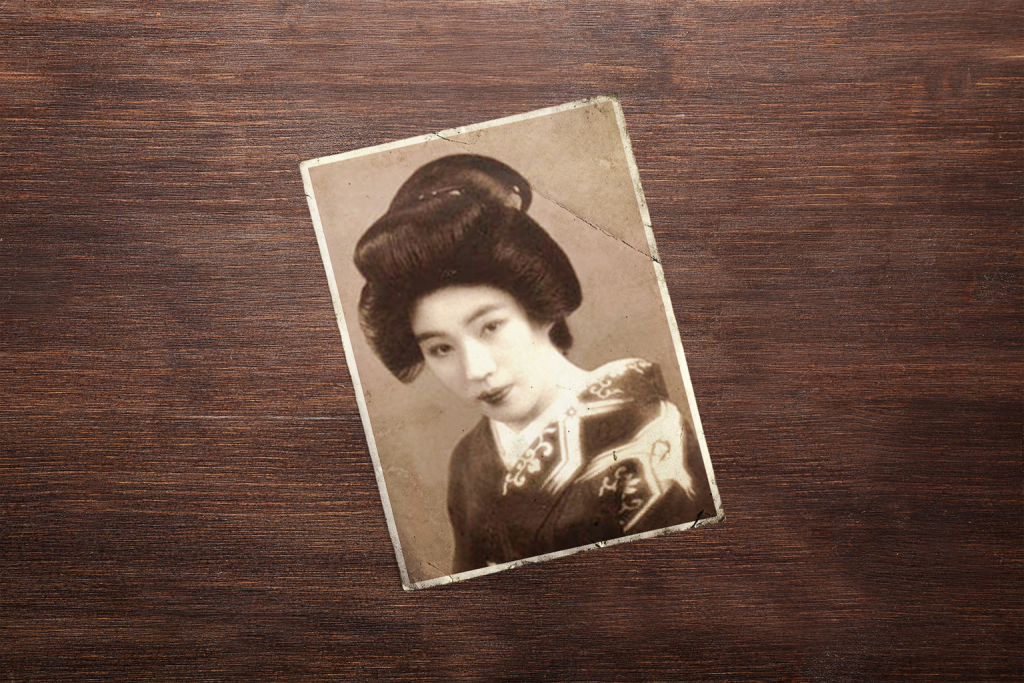When it comes to famous geisha of the 20th century, two names usually come to mind: Kiharu Nakamura and Mineko Iwasaki. In this month’s Spotlight article, we’re focusing on the former.
The first female in Japan to get a pilot’s license, Nakamura entertained several high-profile celebrities from abroad, helped many singers prepare for the role of Cio-Cio-San in Madama Butterfly and wrote numerous books including Secrets of the Geisha and The Memoir of a Tokyo-Born Geisha.
Background
Born Kazuko Yamamoto in Hokkaido on April 14, 1913, she came from a well-to-do family that moved to Tokyo during her youth. As a youngster, she enjoyed strolling around the district of Ginza and quickly became fascinated by the women in white makeup and extravagant kimono outfits. These elegant and mysterious ladies were highly revered, though they weren’t always female.
Geisha were originally men known as Taikomochi who performed as jesters, musicians and storytellers. The first female geisha then appeared at a party in 1751, causing quite a stir. Onna geisha soon outnumbered their male equivalents, providing hospitality and entertainment for government officials and large companies.
Their popularity continued to grow and by the 1920s, there were around 80,000 geisha throughout Japan. Despite her parents’ reservations, Nakamura was determined to add her name to the list. In her mid-teens, she joined the Shimbashi Geisha Association, an elite quarter favored by politicians, writers and artists.
Hobnobbing with the Rich and Famous
Nakamura, who changed her name from Kazuko to Kiharu (meaning “happy spring”), excelled as a maiko being taught by “living national treasures.” Her teachers were particularly impressed by the elegant way she walked and the quavers in her voice when she sang. She also learned to play the shamisen and the tsuzumi (hand drum). Standing out from other women in her profession, however, would not be easy.
One way she managed to achieve this was by studying English. Her command of the language meant foreign dignitaries would often be brought to see her as she was the only geisha they were able to communicate with. It was the same with global celebrities such as baseball player Babe Ruth, British comic Charlie Chaplin and Hollywood star Paulette Goddard.
Esteemed writer, artist and film director Jean Cocteau was so enamored with Nakamura, he spent a week in her company and wrote the poem Geisha about her. Other big names she entertained included British composer Leopold Stokowski and newspaper publisher William Randolph Hearst, the man upon whom the character of Charles Foster Kane was based in Orson Welles’ masterpiece Citizen Kane.
Espionage, Marriage and Divorce
Seeing her as a Mata Hari-type figure, the military police asked Nakamura to gather intelligence on her foreign clients at the start of the war. However, she soon quit as a geisha to marry Shintaro Ota. She then moved with her diplomat husband to his outpost in Calcutta. During her time in India, Nakamura delivered secret papers to anti-British hero Chandra Bose at his hideaway in the Himalayas.
After giving birth to a son, Nakamura divorced Ota and returned to Japan. She spent the remainder of the war living in the countryside. Following Emperor Hirohito’s surrender broadcast in 1945, she decided to move back to Tokyo. Her second marriage was to Masaya Nakamura, a renowned photographer. However, that relationship ended in 1956.
By that stage, she had become disillusioned with life in Japan. A lot had changed since the Occupation and her hometown now felt almost unrecognizable. On top of that, the profession she loved was being tarnished. Many women fraudulently claiming to be “geisha,” were selling their bodies for sex. This image of geisha as prostitutes was soon popularized by American soldiers.
Bringing Geisha Culture to New York
Nakamura wanted to change this misconception. She subsequently moved to New York where she was often spotted walking around in an expensive kimono. She taught students how to play the shamisen and dance, while also giving lectures regarding geisha traditions and Japanese traditional arts.
Her expertise was used to guide performers for the role of Cio-Cio-San in Giacomo Puccini’s opera, Madama Butterfly. That included Anna Moffo, one of the leading lyric-coloratura sopranos of her generation. The former geisha showed them how to stand gracefully from a kneeling position and how to walk with their feet together.
Nakamura acted as a consultant for the 1995 film Seek and Destroy and theatrical productions of Pacific Overtures. She was also one of several geisha interviewed by Arthur Golden for his 1997 bestselling novel, Memoirs of a Geisha. Her own bestsellers included her autobiography which was later made into a television drama.
Nakamura’s Death and Legacy
Nakamura died peacefully in her sleep on January 5, 2004. She was 90. Filmmaker Artemis Willis announced her death to the media. At the time he was directing a documentary about her life. Titled, Smoke and Mirrors: A Geisha Story, it was released later that year. It includes an interview with her son, who describes Nakamura as a “somewhat complicated” woman. “I love my mother, but I hated her personality,” he added.
While Nakamura could come across as quite a cold character, it’s no surprise that Willis wanted to tell her story. After all, her life makes for a fascinating subject. She’s remembered as one of the most distinguished geisha of all time. A woman who loved her old job and used every opportunity she could to dispel myths people had about it.
”There is a great misunderstanding that it’s easy to be a geisha, but it is very difficult. Each geisha has a specialty,” she said during a speech at Manhattanville College in New York. “The profession could fade out,” she added. “I hope it doesn’t as I’m so proud of being a geisha.”









